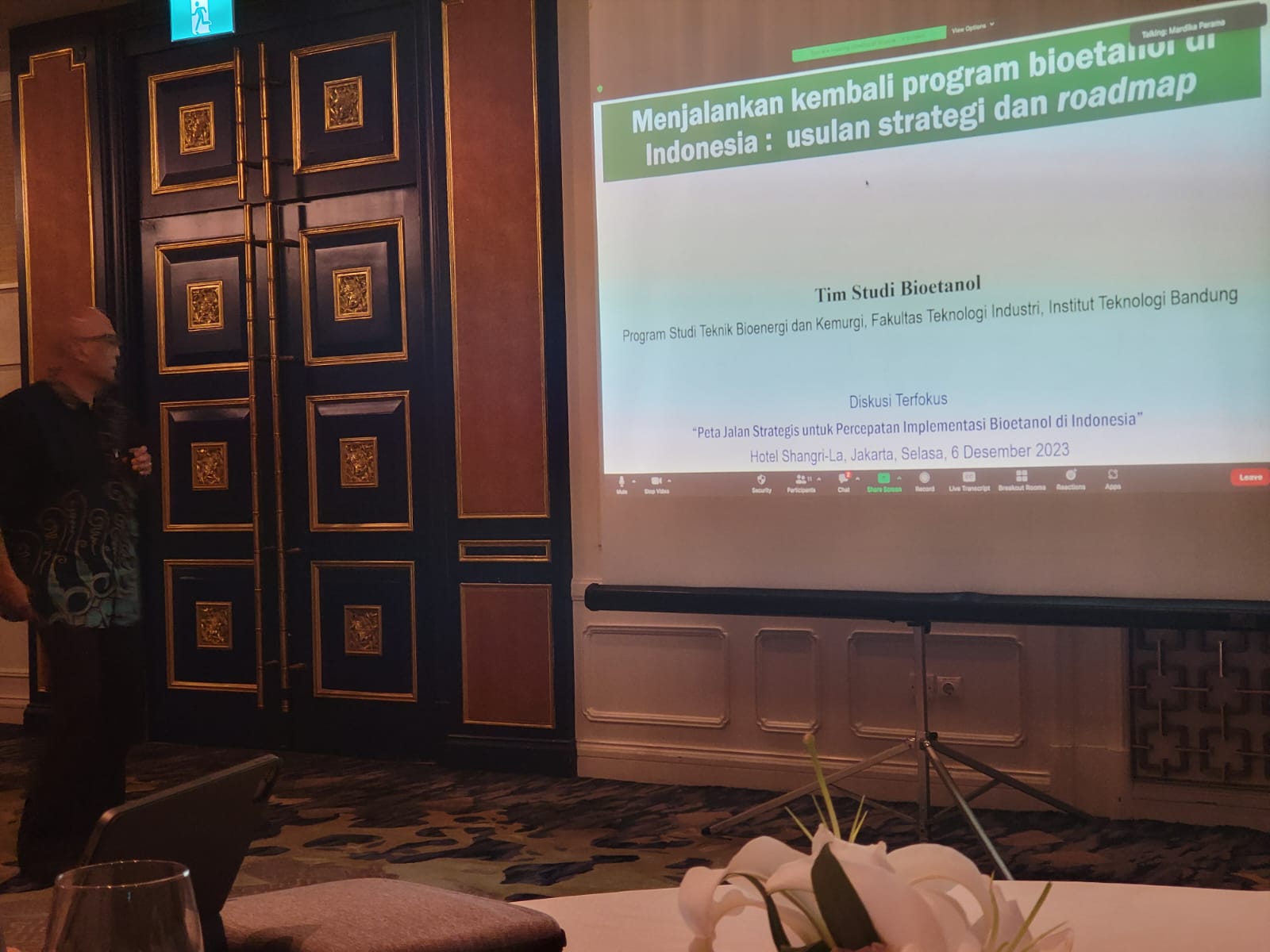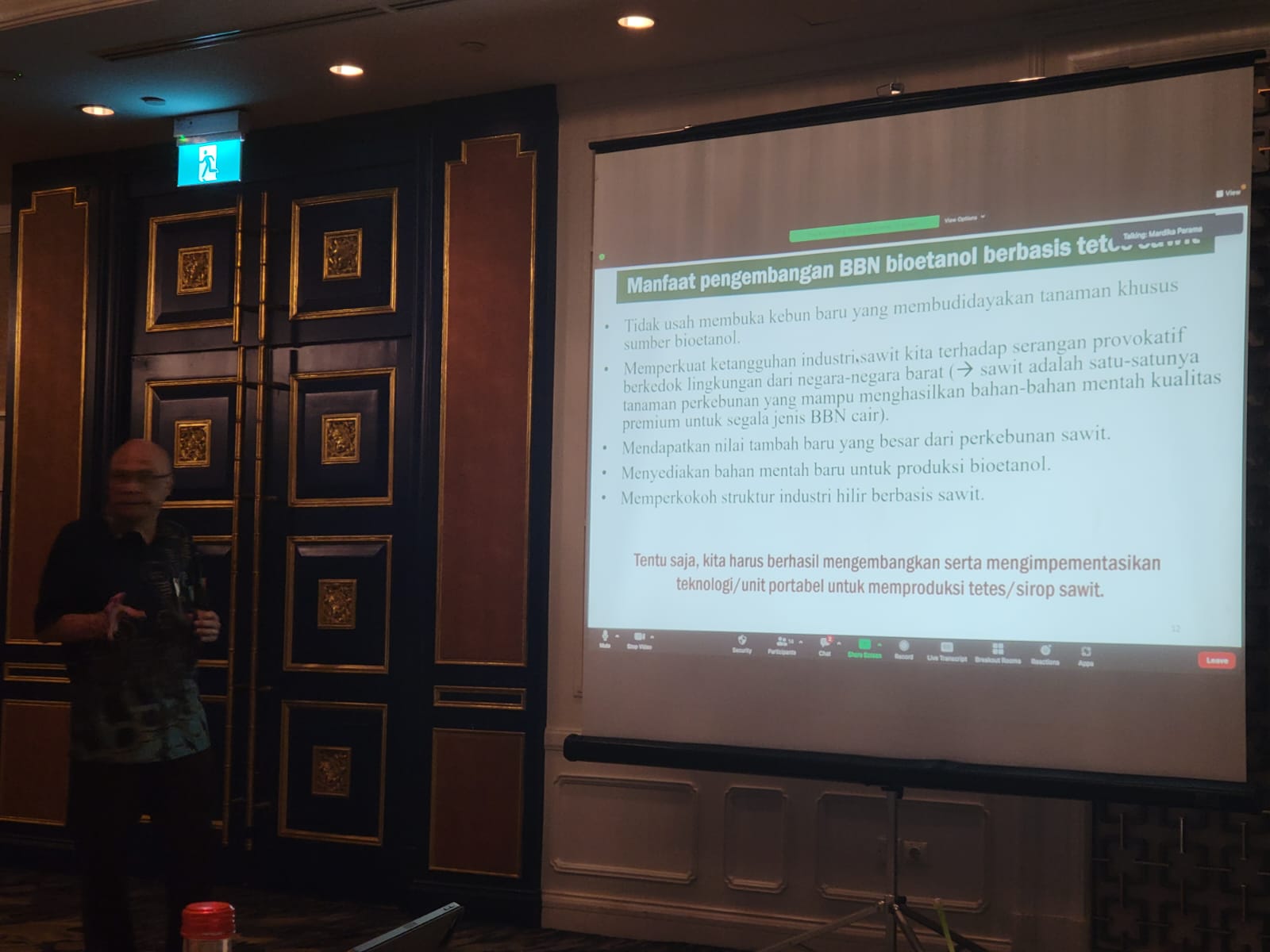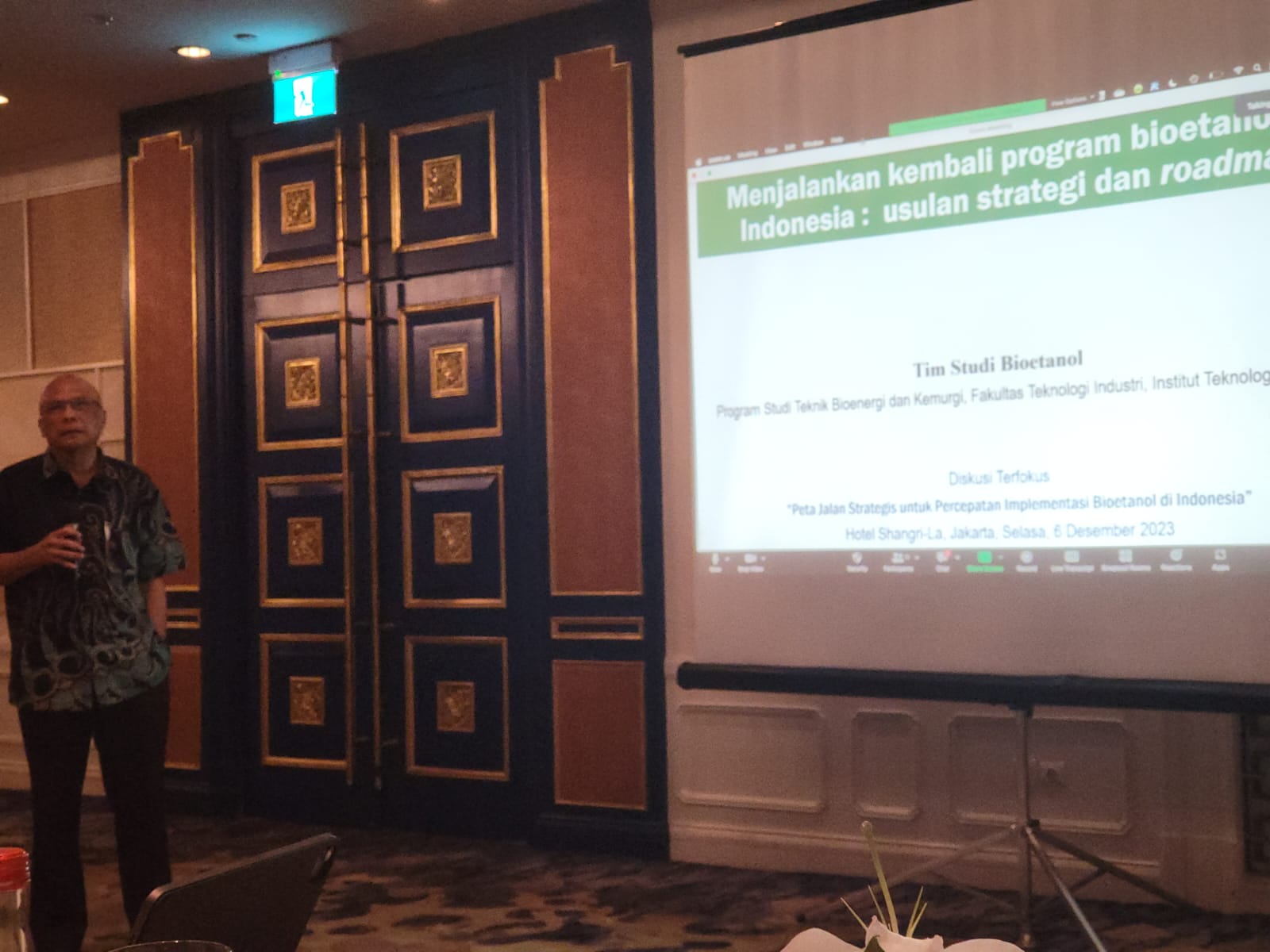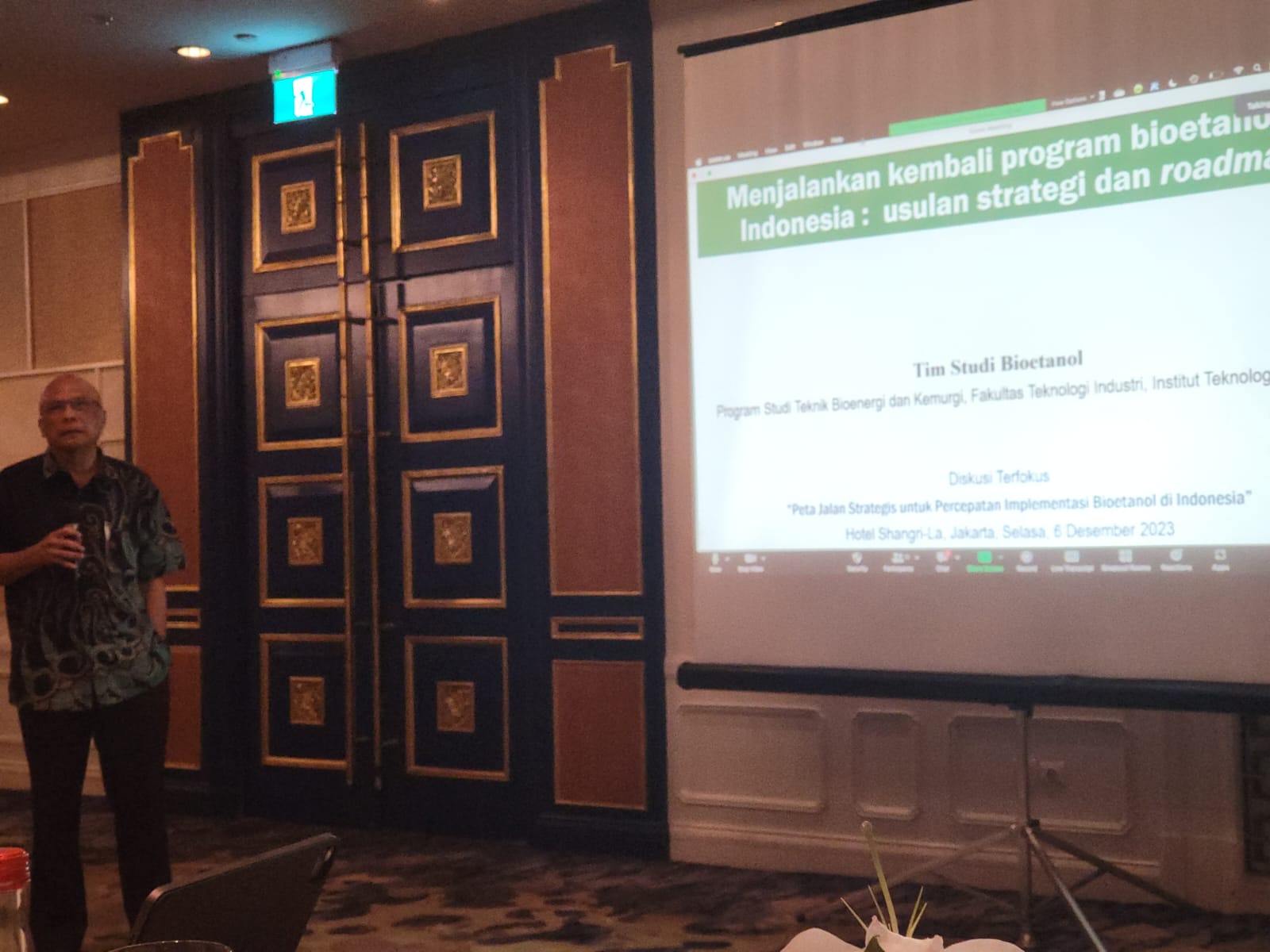[:id]Dikutip dari cnbcindonesia.com dan hak cipta dimiliki oleh cnbcindonesia.com
Pemerintah dalam hal ini Kementerian Energi dan Sumber Daya Mineral (ESDM) bersama dengan Tim Riset Institut Teknologi Bandung (ITB) didukung oleh US Grains Council (USGC) berhasil menyusun Peta Jalan Strategis untuk Percepatan Implementasi Bioetanol di Indonesia.
Roadmap ITB mempersiapkan pengimplementasian bioetanol dengan target jangka pendek selama (3 tahun), menengah (5 tahun), dan panjang.
Adapun target jangka-pendek dari roadmap dimulai dengan introduksi campuran 5% etanol atau E5 secara terbatas di provinsi DKI Jakarta dan Surabaya. Campuran E5 etanol dapat dimasukkan ke dalam BBM jenis Petralite sehingga kualitas RON meningkat setara Pertamax.

Pakar bioenergi ITB, Tatang Hernas Soerawidjaja menyatakan campuran bioetanol dapat menjadi solusi pengurangan tekanan impor BBM yang memberatkan neraca perdagangan Indonesia.
Jika RI mengambil contoh kesuksesan penggunaan substitusi impor diesel dengan program Biodiesel, maka Indonesia dapat mengurangi tekanan impor bensin yang jauh lebih besar porsinya dibandingkan bahan bakar jenis diesel.
Manfaat lain bioetanol juga adalah potensi pengurangan emisi gas rumah kaca hingga 43% termasuk CO2, NOx dan Partikel PM2.5 dan meningkatkan bauran energi terbarukan Indonesia yang ditargetkan mencapai 23% pada tahun 2025.
Penurunan emisi dapat terjadi karena etanol sebagai gasohol memiliki nilai oktan sebesar (RON) 128, sehingga pencampuran dengan bensin akan meningkatkan kadar oktan dan kualitas pembakaran BBM.


“Campuran E5 etanol dapat dimasukan ke dalam BBM jenis Petralite sehingga kualitas RON meningkat setara Pertamax. Nantinya hasil campuran ini akan menjadi produk Pertamax E-5,” pungkas terang Tatang dalam siaran tertulis yang diterima, Rabu (7/11/2022).
Meskipun bioetanol memiliki potensi besar, masih terdapat tantangan dalam pengimplementasiannya sebagai campuran bensin utamanya rendahnya produksi bioetanol di Indonesia.
Laporan ITB juga menyarankan penyesuaian kebijakan untuk menghidupkan implementasi bioetanol di Indonesia, utamanya penetapan kebijakan harga, pajak, dan subsidi yang tepat sasaran, penerapan terbatas di Jawa Timur dan Jakarta sebagai tahap awal dan penyusunan Badan Layanan Umum (BLU) seperti BPDPKS untuk mengembangkan industri bioetanol.
Pemerintah juga disarankan membentuk Badan Layanan Umum khusus bioetanol seperti BPDBKS Sawit yang bertugas mempromosikan usaha dan meningkatkan sarana prasarana produksi bioetanol.
Untuk memantik demand bioetanol domestik dan menarik investasi di sektor bioetanol, Indonesia juga dapat sementara mengimpor bioetanol sambil meningkatkan kapasitas produksi.
Riset ITB memperlihatkan bahwa produksi bioetanol berbasis gula sebesar 150 juta liter per tahun dapat menciptakan 83,000 tenaga kerja baik di perkebunan maupun di fasilitas produksi molase dan etanol.
Untuk jangka menengah, Pemerintah dapat meningkatkan blending bioetanol menjadi E10 dan mengekspansi program bioetanol ke wilayah Jawa sebagai wilayah pengguna BBM tertinggi. Dengan implementasi secara bertahap, diharapkan Indonesia dapat mengimplementasikan campuran bioetanol sebesar E-15 di seluruh wilayah pada tahun 2031.
Direktur Bioenergi Edi Wibowo mengungkapkan, saat ini total produksi bioetanol fuel grade baru mencapai 40.000 KL per tahun, atau jauh di bawah kebutuhan 696.000 KL per tahun untuk pengimplementasian tahap awal di daerah Jawa Timur dan Jakarta. “Pasokan yang tersedia dari PT Enero dan PT Molindo sebagai produsen bioetanol fuel grade baru dapat memasok sekitar 5.7% saja kebutuhan Jawa Timur dan Jakarta. Artinya dari sisi supply harus ditingkatkan,” jelas Edi.
Pencampuran bioetanol sejatinya telah diujicobakan dengan kandungan 2% (E2) di Jawa Timur pada tahun 2018, namun hasil menunjukkan harga BBM campuran bioetanol masih sedikit di atas harga BBM non-PSO. Namun, dengan meningkatnya harga BBM dan pentingnya upaya peningkatan ketahanan energi, re-introduksi BBM campuran bioetanol kembali menjadi isu strategis.
 [:en]Quoted from cnbcindonesia.com and copyright owned by cnbcindonesia.com
[:en]Quoted from cnbcindonesia.com and copyright owned by cnbcindonesia.com
The government, in this case the Ministry of Energy and Mineral Resources (ESDM) together with the Bandung Institute of Technology (ITB) Research Team supported by the US Grains Council (USGC) have succeeded in compiling a Strategic Roadmap to Accelerate Bioethanol Implementation in Indonesia.
The ITB Roadmap prepares for the implementation of bioethanol with short term (3 years), medium (5 years), and long term targets.
The short-term target of the roadmap begins with the limited introduction of 5% ethanol or E5 mixtures in the provinces of DKI Jakarta and Surabaya. A mixture of E5 ethanol can be added to Petralite fuel so that the quality of RON increases to the level of Pertamax.

ITB bioenergy expert, Tatang Hernas Soerawidjaja, stated that the bioethanol mixture could be a solution to reduce fuel import pressure which is burdening Indonesia’s trade balance.
If RI takes the successful example of using diesel import substitution with the Biodiesel program, then Indonesia can reduce the pressure on gasoline imports, which is a much larger portion than diesel fuel.
Another benefit of bioethanol is the potential for reducing greenhouse gas emissions by up to 43% including CO2, NOx and PM2.5 particles and increasing Indonesia’s renewable energy mix which is targeted to reach 23% by 2025.
The reduction in emissions can occur because ethanol as a gasohol has an octane rating (RON) of 128, so mixing it with gasoline will increase the octane level and the quality of the fuel combustion.


“The E5 ethanol mixture can be added to Petralite fuel so that the quality of RON increases to the level of Pertamax. Later this mixture will become a Pertamax E-5 product,” concluded Tatang in a written broadcast received, Wednesday (7/11/2022).
Even though bioethanol has great potential, there are still challenges in implementing it as a blend of gasoline, especially the low production of bioethanol in Indonesia.
The ITB report also suggests policy adjustments to revive the implementation of bioethanol in Indonesia, especially setting prices, taxes and subsidies that are right on target, limited implementation in East Java and Jakarta as the initial stage and the establishment of a Public Service Agency (BLU) such as the BPDPKS to develop the bioethanol industry. .
The government is also advised to form a Public Service Agency specifically for bioethanol such as the Palm Oil BPDBKS which is tasked with promoting business and improving infrastructure for bioethanol production.
To spark domestic demand for bioethanol and attract investment in the bioethanol sector, Indonesia can also temporarily import bioethanol while increasing production capacity.
ITB research shows that sugar-based bioethanol production of 150 million liters per year can create 83,000 workers both on plantations and in molasses and ethanol production facilities.
In the medium term, the government can increase the bioethanol blending to E10 and expand the bioethanol program to the Java region, which is the region with the highest fuel consumption. With gradual implementation, it is hoped that Indonesia will be able to implement a bioethanol mixture of E-15 in all regions by 2031.
Director of Bioenergy Edi Wibowo said that currently the total production of new fuel grade bioethanol reaches 40,000 KL per year, or far below the requirement of 696,000 KL per year for the initial stage of implementation in East Java and Jakarta. “The available supply from PT Enero and PT Molindo as producers of the new fuel grade bioethanol can supply only around 5.7% of the needs of East Java and Jakarta. This means that from the supply side it must be increased,” explained Edi.
Blending of bioethanol has actually been tested with a content of 2% (E2) in East Java in 2018, but the results show that the price of mixed bioethanol fuel is still slightly above the price of non-PSO fuel. However, with the increase in fuel prices and the importance of efforts to increase energy security, the re-introduction of bioethanol blended fuels has again become a strategic issue.
 [:]
[:]








